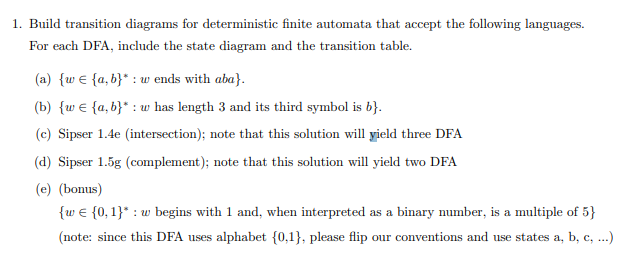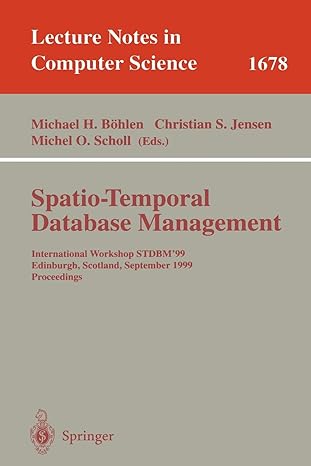Answered step by step
Verified Expert Solution
Question
1 Approved Answer
1. (c) : e. {w| w starts with an a and has at most one b} 1. (d) : g. {w| w is any string

1. (c) : e. {w| w starts with an a and has at most one b}
1. (d) : g. {w| w is any string that doesnt contain exactly two as}
1. Build transition diagrams for deterministic finite automata that accept the following languages. For each DFA, include the state diagram and the transition table. (a) {w {a,b}* : w ends with aba}. (b) {w {a,b}* : w has length 3 and its third symbol is b}. (c) Sipser 1.4e (intersection); note that this solution will yield three DFA (d) Sipser 1.5g (complement); note that this solution will yield two DFA (e) (bonus) {w {0,1}" : w begins with 1 and, when interpreted as a binary number, is a multiple of 5} (note: since this DFA uses alphabet {0,1}, please flip our conventions and use states a, b, c, ...)Step by Step Solution
There are 3 Steps involved in it
Step: 1

Get Instant Access to Expert-Tailored Solutions
See step-by-step solutions with expert insights and AI powered tools for academic success
Step: 2

Step: 3

Ace Your Homework with AI
Get the answers you need in no time with our AI-driven, step-by-step assistance
Get Started


